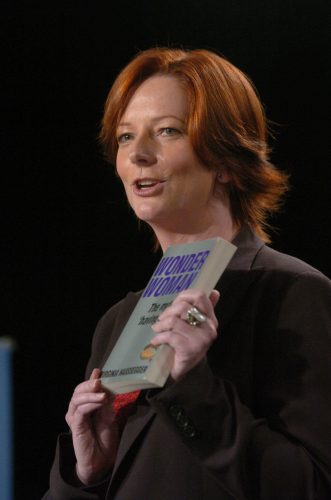I have voices in my head. Lots of them. I’ve had them for years and I’m rather used to it. But this week two new voices popped in, and they’re different from the others. One is called Kylie and the other is Bruce. Odd names for voices in one’s head, I know. But I didn’t name them. My broadcast colleagues did.
Bruce and Kylie are pleasant enough, but the fact is that they’re electronic bullies. As of this week, they now hover in my head while I’m delivering the evening news on television. They tell me when to talk, when to stop, when to speed up and when to slow down.
Though precise and demanding, they’re annoyingly calm and consistent in tone. In fact, I wouldn’t mind if they occasionally snapped at me. At least that would make them seem a bit human. I might be mid- sentence, giving a summary of the day’s news stories, when Bruce butts in – through my earpiece – ”one minute to off-air”. Neither he nor Kylie ever say ”um” and ”er”. They don’t chew in my ear, sigh or swear.
They never crack jokes. And they certainly never try to reassure me with soothing words, to say that everything is going OK, when I know it’s not. Worst of all, they never call me by name.
These two are a new breed of instructing voices. They’re steely and professional, and they never, ever get it wrong. That’s the thing about computerised timekeepers and automated directors, they’re infallible – apparently.
As the Canberra newsroom made its first moves this week towards a fully digital and automated mode of television news transmission, for a faster and more flexible news service, it’s astounding to reflect on how rapidly news delivery is changing.
At the risk of sounding like a dinosaur, the truth is when I first began broadcasting there were no voices in my head. No computerised ones – of course. But not even any human ones. There was no earpiece connection to the studio control room. There was just a telephone sitting on the desk. As for an ”autocue”, which is directly linked to a computer network which can update news stories instantly, well, that was unheard of. Back in the phone-desk days, the autocue words were manually typed on paper and duplicated into carbon copies. The pages were then stuck together with sticky tape, and the long, toilet roll- type scroll was wound by hand by the ”autocue lady”. Bless her.
Back then there were no electronic voices like Kylie or Bruce. All that was in my head were the thoughts I was thinking, and the words I was speaking. Blissfully simple, really.
Now, however, not only has the delivery of television news entered a brave new era, so too has the way we all get our news. All forms of news. Whether it’s information about world events, the latest celebrity crisis, your team’s score, or what your workmate is having for dinner, we can all tune in, log on and get the latest update about pretty much anything we want to know.
Though this technological leap means there might be oodles of information coming at us from all directions, and we sometimes feel as if we’ve got multiple voices in our head, the advantages are nevertheless breathtaking.
Until the recent presidential election in Iran, I was a Twitter virgin and a naysayer. But that event, and the ability to sit before my computer in the wee hours of the morning watching hundreds upon hundreds of brief, on-the-spot, reports about brewing opposition, was a turning point for me – and apparently for hundreds of thousands of others who have also recently signed up to Twitter. As I watched the historic protests unfold, via Twitter updates and web links to video and photo websites and blogs, it felt like what I imagine my parents felt watching the first man land on the moon. So incredibly far away – and yet, thanks to audacious technology, so exquisitely connected.
Twitter, which has grabbed headlines since it first sneaked into cyberspace three years ago, has taken most of us by surprise. Who would have thought a simple website that traffics messages of no more than 140 characters long, could become a compelling communication tool? But it has.
And it’s not just the immediacy, or the access to endless information, that makes Twitter seductive. Like Facebook, MySpace and the countless other social media networks, there’s something very satisfying about being connected to others. While we may not be actively participating, there’s gratification in the ”ambient awareness” that comes with being linked, or in touch with what’s going on among our friends and colleagues, and out there in the wider world.
Which brings me back to those many voices in my head, and that ongoing flow of information. Sure, sometimes I wish they’d all pipe down and give me some peace. But I’ve grown used to the chatter. Even fond of it.
I just wish I could computerise Bruce and Kylie to be a little more human. Perhaps they could occasionally miss a count, or crack a joke. Or maybe we could program an electronic snicker?






